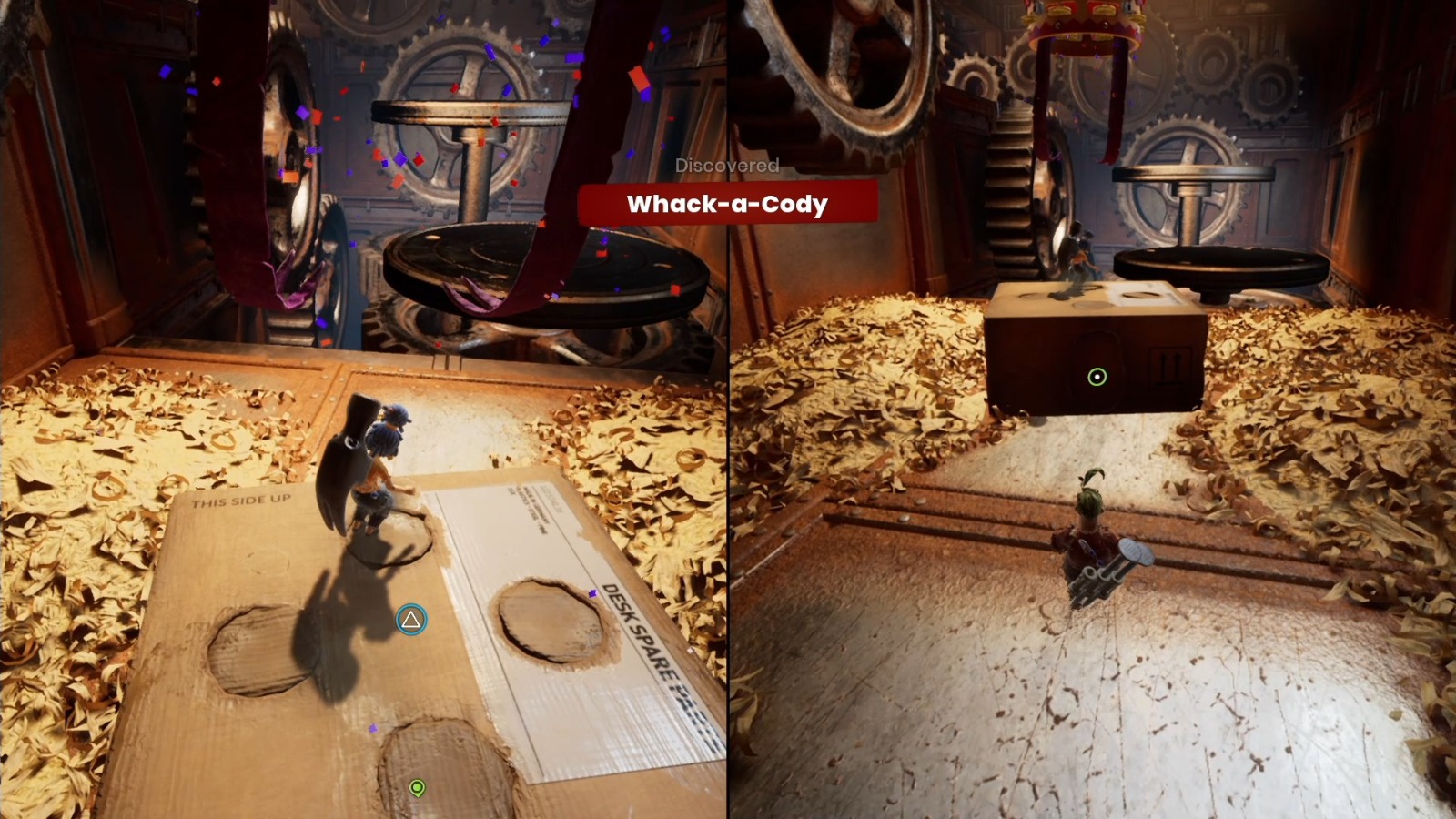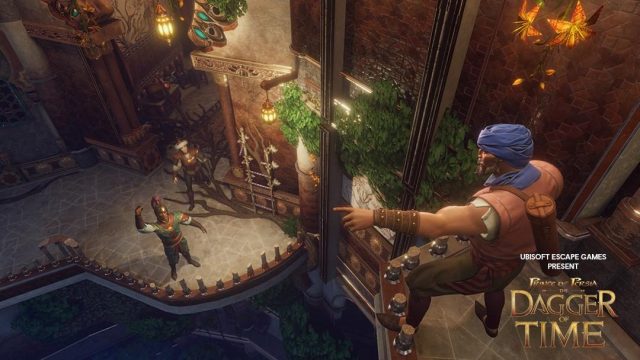It Takes Two is an action-adventure video game developed by Hazelight Studios and published by Electronic Arts in March 2021. It is a cooperative game played by two players, each controlling a main character: May or Cody. In the game, the clashing couple Cody and May are transformed into dolls. The players are required to work together to solve puzzles and go on an adventure to transform back into their real form.
Personal Experience
The story of Cody and May (which will be discussed in the analysis below) is not special or unique. In fact, the conflict between them can be said to be very common for couples, which makes it more relatable to players, especially those who are or have been in a relationship. Though the story is not that special, the game mechanics and gameplay experience deliver the story in an interesting way, by making use of fictional characters (such as the Book of Love) to guide them in fixing the relationship. Almost everything in the game is interactive, which helps me to constantly get engaged in the game, knowing that there are a lot of new things for me to discover and enjoy. The game does not get boring as each level assigns me and my friend a new tool or special ability, which we will have to figure out and make use of it. Even when we feel stuck or frustrated in finding a way to progress the game, we could always walk around and interact with the surroundings to distract ourselves from the main task and have a break by playing some simple small mini-games inside.
Analysis
This blog will analyze how the game brings such a unique and fun experience for the players that make it the Game of the Year 2021, given by The Game Awards. The analysis will be done using the elemental tetrad and lenses defined in The Art of Game Design: A book of lenses by Jesse Schell.
THE ELEMENTAL TETRAD
The elemental tetrad consists of the 4 basic elements of a game: aesthetics, mechanics, story, and technology. It Takes Two made use of all four elements to create a fun gameplay experience for the 2 players. Though the Technology part might not be as visible as the other three, the implementation in Unreal Engine makes the game smooth and allows the players to focus on the other 3 elements and have a more immersive gameplay experience.
AESTHETICS
- Shadow work, dazzling visual effects, and realistic textures
- The player does not get bored as the environment and surroundings change every chapter, which gives each chapter a unique design, color scheme, and sound effect.

MECHANICS
- The mechanics change in each chapter of the game, giving 2 players a different set of abilities. Players therefore will need to explore around and figure out how to make use of their tools to work their way through.
- For example, in one chapter of the game, Cody will have the ability to throw screw nails and summon them back by whistling. May gets a hammer that can smash most things in her way (including Cody). Through the chapter, the players will have to realize that they will not be able to get through certain parts of the game without each other. At some point in time, Cody will have to throw the nails on the wall and let May swing over to travel to another location.
- In each chapter, the game also provides some simple mini-games that allow players to make use of the tools they currently hold. The games are all extremely simple and well-known worldwide, allowing the players to relax and have fun without any tutorial needed.
- In the ‘nail and hammer’ chapter, players will walk past a box with holes where they can play whack-a-mole, where Cody can be the ‘mole’ and May can whack with her hammer.

STORY
- The story in the game is relatively relatable for players because the reasons for them having conflicts are common between couples or families. Although it is somehow expected that the relationship will slowly fix as the game progresses, the game mechanics and aesthetics make the story more enjoyable and engaging.
- Use of metaphors: The chapter where May and Cody use magnets to solve the puzzles is the phase where they find their attraction to each other again
THE LENS OF ESSENTIAL EXPERIENCE
- The essence of the game is to collaborate with the player’s significant other. One of the essential experiences most players will have is the satisfaction of progressing through the game by communicating and collaborating with each other.
- The other essential experience players might have is from the aesthetic part of the game. The realistic textures and choice of color schemes give players an immersive gameplay experience.
THE LENS OF CURIOSITY & USEFUL REWARDS
- The environment and surroundings in the game are very interactive, allowing players to get rewarded for their curiosity.
- The puzzle-solving journey will sometimes be intense and stressful. Therefore, the mini-games that players can discover provide great help for letting them relax and have fun, even though they do not help in the progression of the game at all.
THE LENS OF PROBLEM-SOLVING
- As mentioned, each chapter gives May and Cody a different unique tool or ability. They will have to use these tools to puzzle through the obstacles. This ensures that the players will not get bored as they will always need to learn a new set of mechanics in each chapter.
THE LENS OF UNIFICATION THEME
- The title of the game reflects its theme of love and collaboration
- The storyline of Cody and May fixing their relationship and rekindling their love is also coherent with the theme. The game made use of a ‘living book’, called Dr. Hakim, to teach Cody and May (and the players) the importance of each other in the relationship and each other’s lives.
- The game mechanics emphasize the theme by making the players realize they can only finish the game if they communicate and collaborate with each other. They cannot leave anyone behind.

CONCLUSION
It Takes Two has done well in much more lenses other than those mentioned in this blog. Using technology to support the aesthetics, mechanics and story of the game has made is such an enjoyable game for players to play with a good friend, family member or life partner.

